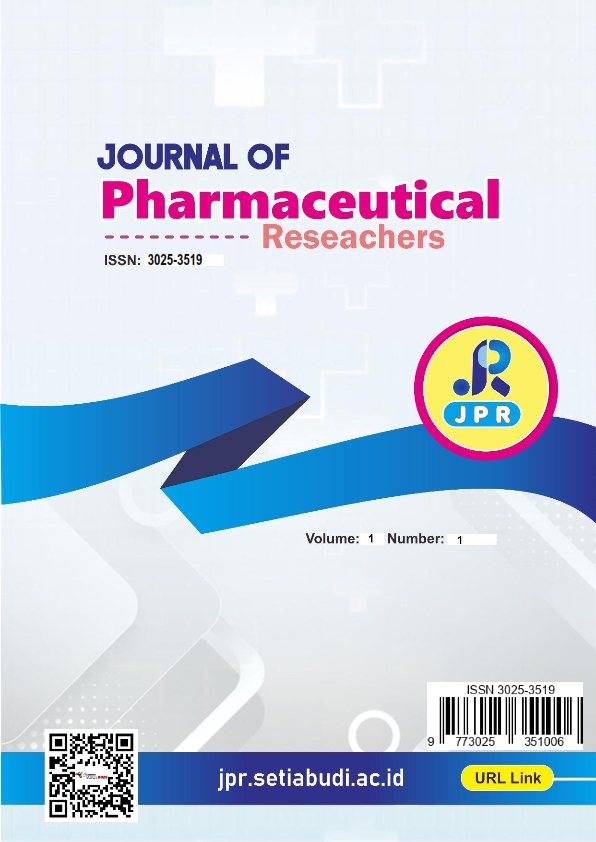Abstract
Allantoin is a kind of chemical compound as an anti-irritant and wound healer. Allantoin has a safe component characteristic, have not toxic but is easily degraded when used orally. On the other hand, modified allantoin through nanogels can increase stability and provide a maximum therapeutic effect. This study aims to determine the effects of the tripolyphosphate different concentrations as a crosslinking way on the characteristics of nano allantoin, determine the physical characteristics, and stability of the selected formula allantoin nanogel.
Allantoin nanoparticles were prepared using the ionic gelation method between chitosan polymer and tripolyphosphate crosslinker. The concentration of allantoin used was 0.5%, chitosan was 0.2% in 1% glacial acetic acid, and tripolyphosphate made in 3 variations, consisted of 0.3%; 0.2%; and 0.1%. The characteristics of nanoparticles include particle size, zeta potential, and sorption efficiency. Hydroxypropyl methylcellulose (HPMC) was used as a gelling material. The characteristics of nanogels include organoleptic, homogeneity, spreadability, adhesion, and viscosity.
The results of the nano allantoin characteristic test showed the lower the tripolyphosphate concentration, the smaller the particle size, the stable zeta potential, and the higher the adsorption efficiency. Nano allantoin formula number 3 was chosen as the formula for the manufacture of nanogels, which had the smallest particle size (160.73±2.4 nm), stable zeta potential (31.27±2.76 mV), and the highest adsorption efficiency (60.01±0,5%. Formula 3 was proven to be able to be formulated in the form of nanogels and had good gel physical properties standards. The cycling test stability test showed that the preparation was stable during storage.
